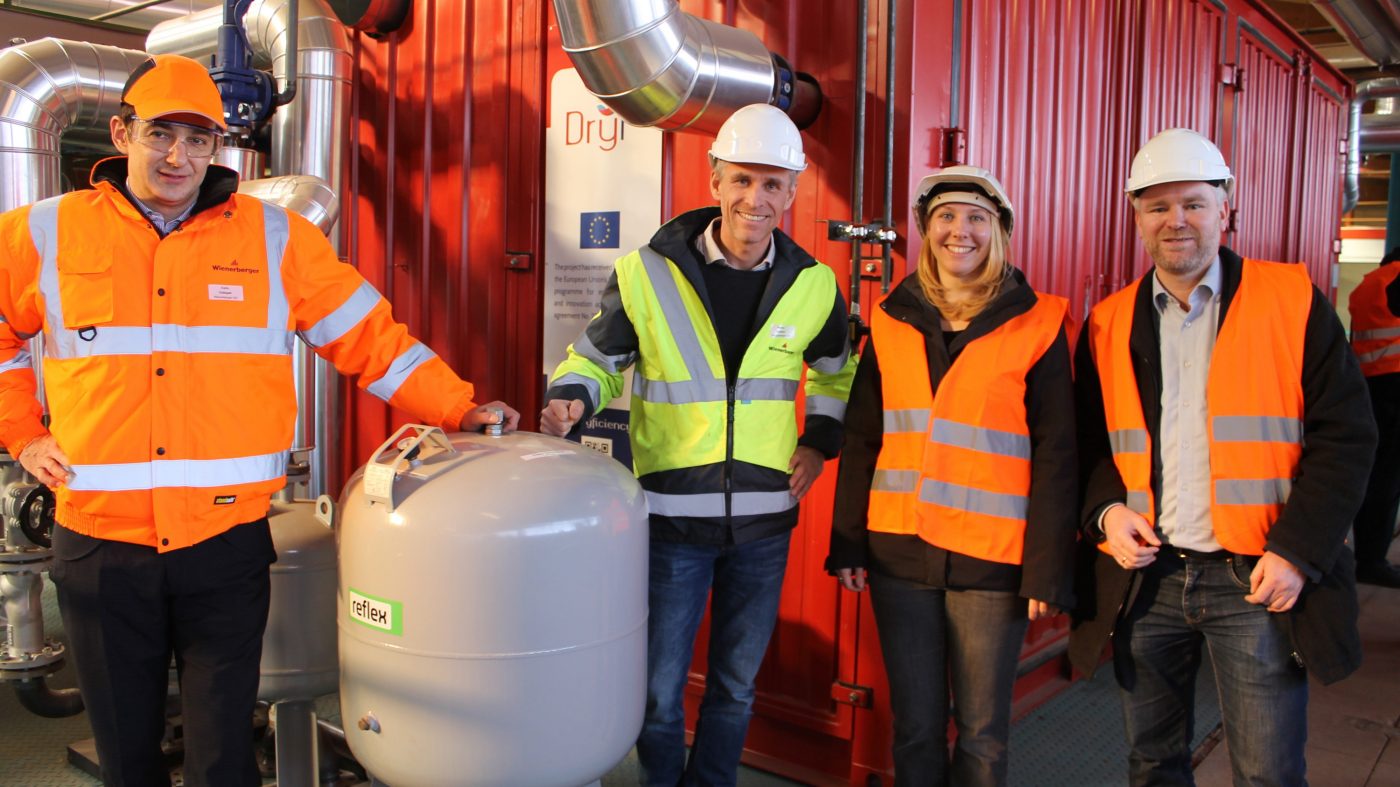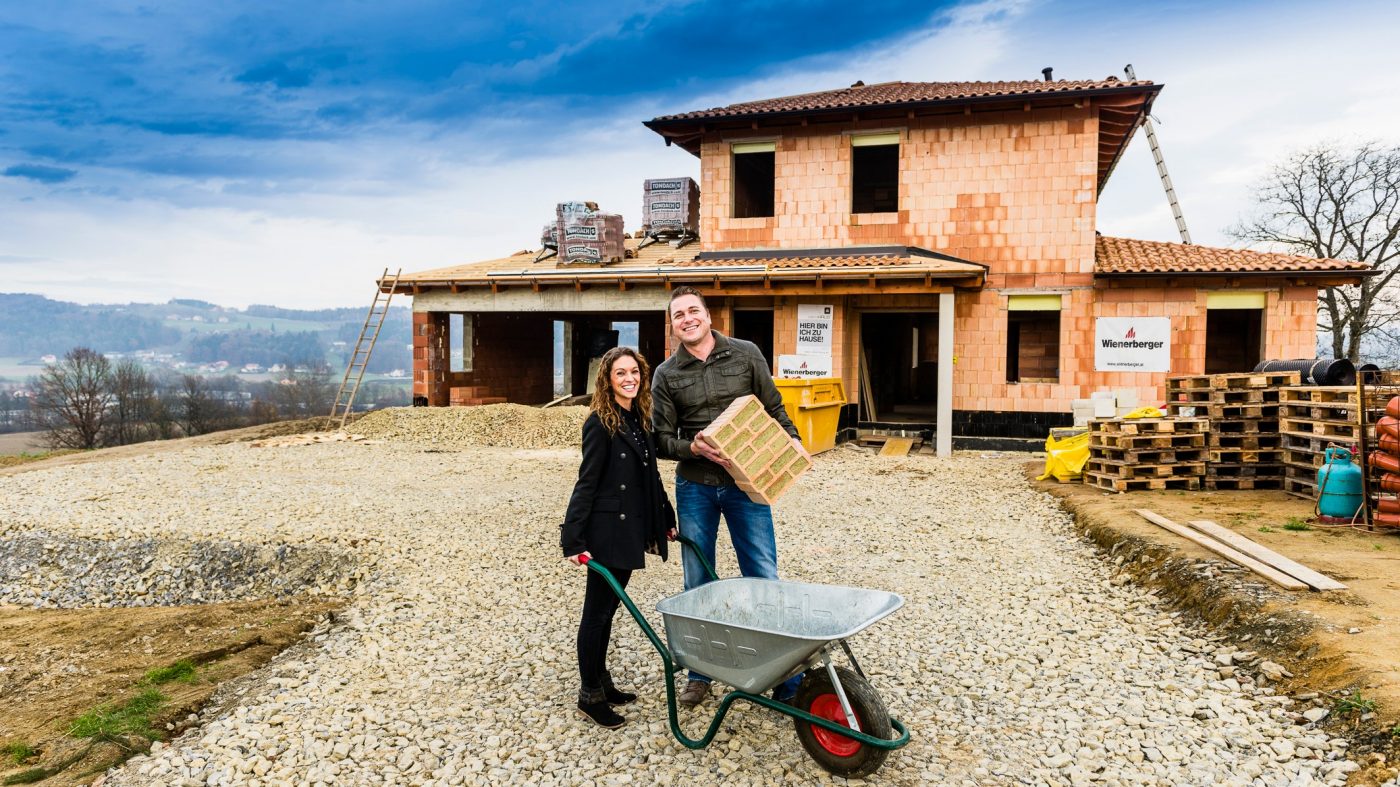 © Markus Esser
© Markus Esser
Bricks as a Chance for the Climate
From Production to Recycling: wienerberger breaks new ground in pursuit of decarbonization. The Uttendorf demonstration plant in Upper Austria is a perfect example.
 © Markus Esser
© Markus Esser
From Production to Recycling: wienerberger breaks new ground in pursuit of decarbonization. The Uttendorf demonstration plant in Upper Austria is a perfect example.
Seven out of ten Austrians who build their own home choose bricks as the construction material. With very good reason: The sustainable clay product is natural and long-lasting, and scores high marks for insulation and energy efficiency. And that is good for the climate. In order to further minimize the impact on the environment, wienerberger is driving forward new solutions for decarbonization across the entire life cycle of buildings.
An important lever for reducing CO2 emissions is brick production. Drying and firing this construction material requires a great deal of energy in the form of natural gas, but a significant amount is unfortunately then lost in the form of waste heat. wienerberger is taking on this challenge at its Uttendorf demonstration plant in Upper Austria. “In 2017 we installed a powerful absorption heat pump. This technology provides heat for the tunnel dryer using steam produced by recovering heat from the exhaust air” explains Stefan Puskas, project manager in the engineering team. In this way, the energy can be used efficiently.
Additional steps taken in Uttendorf include the development of lighter tunnel kiln cars to reduce the so-called dead mass in the kiln, material that is not processed, thereby saving energy during the firing process. Flow-optimized fans also boost the efficiency of the drying process. “Overall, these measures have already helped us reduce gas consumption by almost a third,” says Puskas. Since 2019 selected technologies have been rolled out at other wienerberger plants, too.

Uttendorf is also a center of research. As part of the EU-funded DryFiciency project, the first industrial compression heat pump for high-temperature applications was developed in cooperation with the AIT (Austrian Institute of Technology). Pilot operations at the demonstration plant began in 2019. This pump stands out because it can supply heating water of up to 160 degrees, yet numerous challenges had to be overcome along the way. These included the development of a refrigerant (Chemours) suitable for high temperatures and a matching lubricant (Fuchs Schmierstoffe). The project is scheduled for completion in mid-2021. Further information: dry-f.eu
Brick production is not the only area where energy can be saved: Buildings themselves also offer potential. According to a recent Zieglerverband Report the building sector is one of the largest energy consumers in Europe and is responsible for more than one third of greenhouse gas emissions. Currently, roughly 75% of the building stock is energy inefficient. “We are responding to these challenges and making a contribution to climate protection with products like climate-neutral bricks”, explains Johannes Rath, Chief Technology Officer at Wienerberger Building Solutions.
As the first climate-neutral and TÜV-certified brick on the Austrian market, the Porotherm 38 W.i EFH Plan is especially suitable for the construction of single-family homes. Thanks to the mineral wool filling, it creates a natural indoor climate with outstanding thermal insulation values and cuts heating costs by up to a quarter. These innovative clay blocks for wall construction could reduce CO2 emissions in Austria by 5,800 tons per year, which is equivalent to the emissions of 3,000 cars.
As bricks have a lifespan of more than 100 years, brick house facades are an ecologically sensible construction method. But what happens when they reach the end of their service life? “We are already working intensively on developing our new Sustainability Strategy 2020+ in which promoting a circular economy is one of the three key thematic areas alongside decarbonization and biodiversity”, says Rath. wienerberger is committed to resource efficiency and will actively work to ensure that all the products we manufacture are either reusable or fully recyclable.
The leading global brick company has already achieved some success in this regard. Developments in 2019 included new products based on production waste such as brick chippings. In addition, a number of different tests were carried out during research and development projects on the use of demolition material from old brick buildings (urban mining).
 © Robert Sommerauer
© Robert Sommerauer
As part of our Sustainability Strategy 2020+ we will make extensive investments in the decarbonization of our portfolio.
As part of its sustainability strategy wienerberger is making substantial investments in the decarbonization of its portfolio. “In doing so, we ensure that our products and system solutions make a positive contribution to the energy balance of buildings throughout their entire life cycles”, says Rath. Specifically, investments in this area have been increased to 50 million euros per year.
To provide even more precise information on emissions, new measurement indicators have been introduced and the reporting scope has been expanded to include emissions from purchased electricity. In addition to the development of clean technologies, activities will also focus on in-house power generation - for example by installing photovoltaic systems on the company’s own plant roofs - and the purchase of green electricity or biogas.
The fact is: Sustainable building materials play a decisive role on the path to the energy future. wienerberger is leading the way as a pioneer in the industry - and there is much promising potential to be tapped.